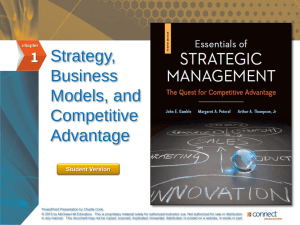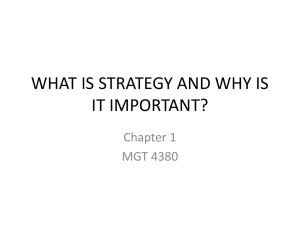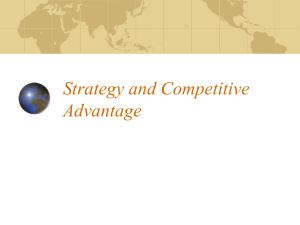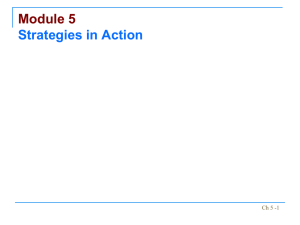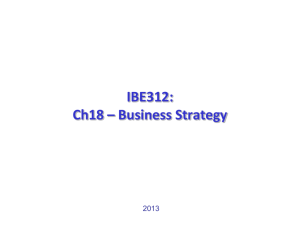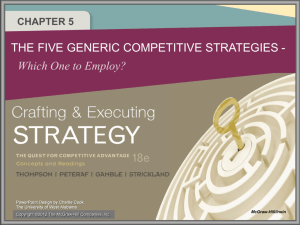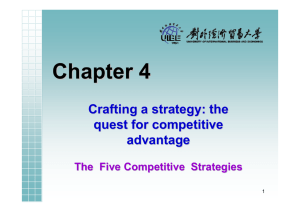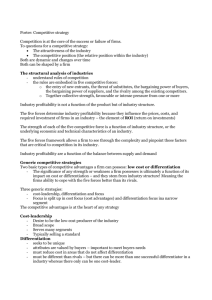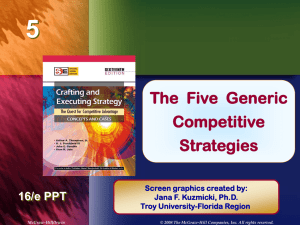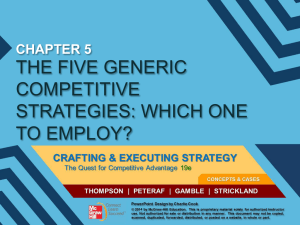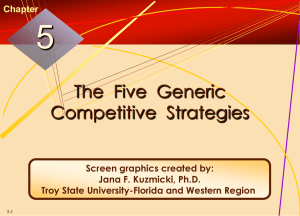Chapter 5 - Generic Strategies
advertisement
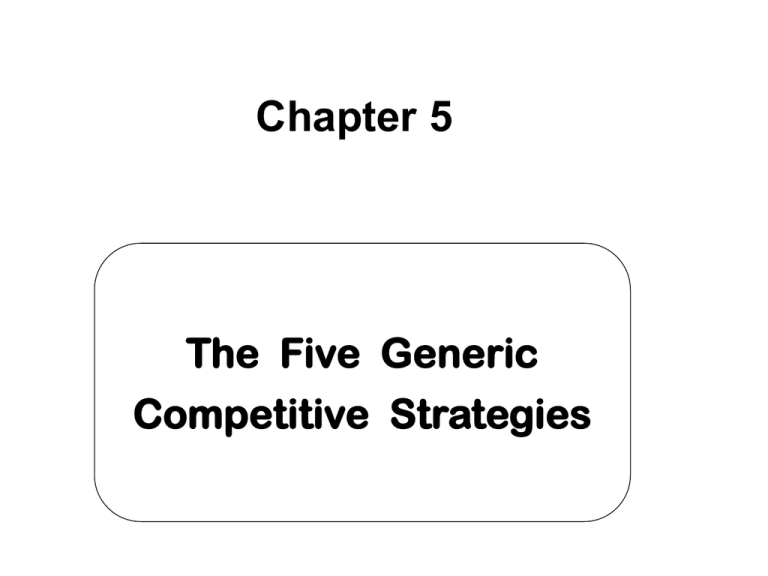
Chapter 5 The Five Generic Competitive Strategies Chapter Outline The Five Generic Strategies 1. Low-Cost Provider Strategy 2. Broad Differentiation Strategy 3. Best-Cost Provider Strategy 4. Focused (or Market Niche) Strategy based on low costs 5. Focused (or Market Niche) Strategy based on differentiation Strategy and Competitive Advantage • Convince customers firm’s product / service offers superior value – A good product at a low price… or – A superior product worth paying more… or – A best-value product… Five Generic Competitive Strategies # 1 - Low-Cost Provider Strategies • Seek meaningful lower costs than rivals – Include features and services in product offering that buyers consider essential ... then – Find approaches to achieve a cost advantage in ways difficult for rivals to copy or match Translating a Low-Cost Advantage into Higher Profits: Two Options Option 1: Use lower-cost edge to under-price competitors and attract price-sensitive buyers in enough numbers to increase total profits Option 2: Maintain present price, be content with present market share, and use lower-cost edge to earn a higher profit margin on each unit sold, thereby increasing total profits Approaches to Securing a Cost Advantage • Do a better job than rivals of performing value chain activities efficiently and cost effectively » or • Revamp value chain to bypass cost-producing activities that add little value from the buyer’s perspective # 2 - Differentiation Strategies • Incorporate differentiating features that cause buyers to prefer firm’s product or service over brands of rivals – Find ways to differentiate that are not easily matched or cheaply copied by rivals – Do not spend more to achieve differentiation than the price premium that can be charged Benefits of Successful Differentiation A product / service with unique, appealing attributes allows a firm to Command a premium price and/or Increase unit sales and/or Build brand loyalty = Competitive Advantage Sustaining Differentiation: Keys to Competitive Advantage • Best choices to gain a longer-lasting, more profitable competitive edge – New product innovation – Technical superiority – Product quality and reliability – Comprehensive customer service – Unique competitive capabilities # 3 - Competitive Strength of a Best-Cost Provider Strategy • A best-cost provider’s competitive advantage is based on ability to include upscale attributes at a lower cost than rivals’ comparable products • Must be able to – Incorporate attractive features at a lower cost than rivals – Manufacture a good-to-excellent quality product at a lower cost than rivals – Develop a product that delivers good-to-excellent performance at a lower cost than rivals Risk of a Best-Cost Provider Strategy • A best-cost provider may get squeezed between strategies of firms using low-cost and differentiation strategies – Low-cost leaders may be able to siphon customers away with a lower price – High-end differentiators may be able to steal customers away with better product attributes #4 & 5 -Focus / Niche Strategies • Involve concentrated attention on a narrow piece of the total market • Choose a market niche where buyers have distinctive preferences, special requirements, or unique needs Focus / Niche Strategies and Competitive Advantage • Achieve lower costs than rivals in serving a well-defined buyer segment – #4 - Focused low-cost strategy • Offer a product appealing to unique preferences of a well-defined buyer segment – #5 - Focused differentiation strategy Deciding Which Generic Competitive Strategy to Use • Each positions a company differently in its market and competitive environment • Each establishes a central theme for how a company will endeavor to “out-compete” rivals • Each creates some boundaries for maneuvering as market circumstances unfold • Each entails differences in product line, production emphasis, marketing emphasis, and means to sustain the strategy
